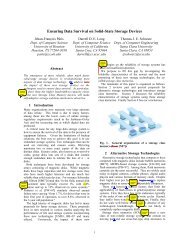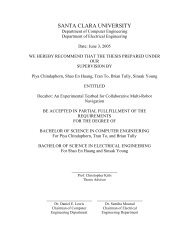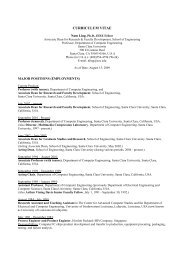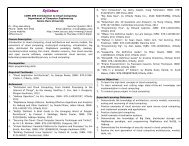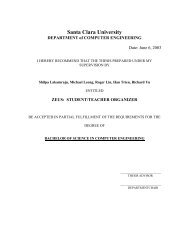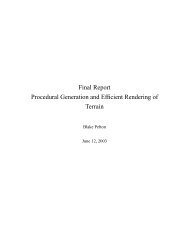Issues in Computer Forensics
Issues in Computer Forensics
Issues in Computer Forensics
Create successful ePaper yourself
Turn your PDF publications into a flip-book with our unique Google optimized e-Paper software.
But it is possible to recover deleted files even after its record is overwritten <strong>in</strong> the<br />
MFT and <strong>in</strong>dex entry of its parent folder. If the file data was large enough, the data<br />
would have resided <strong>in</strong> some clusters on the disk <strong>in</strong>stead of the MFT itself. Clusters<br />
hold<strong>in</strong>g data of deleted files compose part of the unallocated space on the disk, so a<br />
simple list<strong>in</strong>g of the file directory’s contents will not show the deleted files. Because the<br />
forensic analyst has all the contents of the suspect’s hard drive, the analyst could search<br />
for a deleted file’s contents on the disk us<strong>in</strong>g a hex editor or other forensic tools.<br />
Unallocated space is a huge source of <strong>in</strong>formation for analysts because deleted file data<br />
resid<strong>in</strong>g there may not have been overwritten yet. Unallocated space also conta<strong>in</strong>s<br />
contents of the <strong>in</strong>dex buffers of deleted folder entries.<br />
Mov<strong>in</strong>g and renam<strong>in</strong>g a file creates entries <strong>in</strong> the MFT that have the same MAC<br />
times, start<strong>in</strong>g clusters and file sizes. Forensic analysts can exam<strong>in</strong>e the record allocated<br />
renamed file <strong>in</strong> the MFT with the deleted file <strong>in</strong> the unallocated space to compare if they<br />
are <strong>in</strong>deed the same. If they are the same, this can establish proof that a suspect had<br />
knowledge of the file’s existence s<strong>in</strong>ce the suspect moved it (if only the suspect had<br />
access to the computer). MAC times also can help prove the suspect’s knowledge of a<br />
file and its contents as they show the time it was created, last modified, and last accessed.<br />
For example, if the file was last accessed at a time much later than the creation time, the<br />
<strong>in</strong>vestigator could show that the suspect know<strong>in</strong>gly used the file, as shown <strong>in</strong> a court case<br />
<strong>in</strong>volv<strong>in</strong>g child pornography <strong>in</strong> which the defendant had claimed he simply downloaded<br />
files of unknown content and forwarded them to others without view<strong>in</strong>g them. The<br />
forensic <strong>in</strong>vestigator had evidence of the MAC times of the files <strong>in</strong> question and that<br />
8



